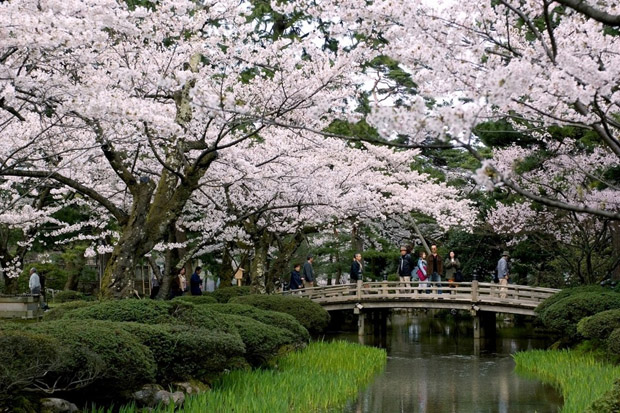If you are planning on visiting Japan, the city of Kanazawa is work a look in. This Edo-period city has been off the beaten track for some time and was a task getting to, but this should not be an issue any more. The Japanese rail way has opened a new Shinkansen route to the city, from Tokyo you can get there in two and half hours (with your Japan Rail Pass). While there experience it geisha culture, Higashi Chaya traditional teahouses and the Kenrokuen garden, one of Japan’s most breathtaking.

On arrival in Kanazawa, you will wonder why it has not been on every visitor’s must-see list before. The samurai, the geisha and lords and merchants have left their mark in the compact central area of Kanazawa, which is part of the Unesco Creative Cities Network as a city of Crafts and Folk Art.
The Kenrokuen garden, once the outer pleasure gardens of the Maeda Lords, is considered one of Japan’s three most magnificent and breathtaking gardens for its scale ( it is over 25 acres) and beauty.
The streams, large ponds, waterfalls and moats filled with water piped for many kilometres upstream are of the great engineering fests of the Edo period. Even the fountain was created using the natural pressure from the higher pond of this garden, set on the hillside and offering spectacular views.
The big pond called Kasumigaike has been compared to an open sea, and has an island on which an ageless hermit with miraculous powers was believed to live. Visiting during the cherry blossom season or for the autumn leaves will only add to the experience. However, even in winter it is magical, notable for its yukitsuri – numerous ropes strung down from the trees in a conical shape to support the branches from the weight of the heavy of the heavy wet snow.
It is also where you will find the Seisonkaku Villa, a rare example of daimyo palace architecture. Built in 1863 by a Maeda lord, it is one of the most elegant remaining feudal lord villas in Japan.
Kanazawa’s Higashi Chaya district, the largest chaya teahouse district in the city, is another highlight. Here you can ejoy the geisha culture as you are taken back in time along historical rows of houses, characterised by their beautiful lattice, called kimusuko, on the ground floor. Explore mazes of alleys and even step inside a chaya house built 180 years ago. The area, designed as a Japanese Cultural Asset, in close to the Asano River and a great place to experience a traditional teahouse and also a geisha performance.
In total contrast, the 21st Century Museum of Contemporary Art is the modern face of the city. A low circular building, with walls made of glass, its permanent installations include Leandro Erlich’s Swimming Pool, where people below appear to be under water.
Other attractions that will delight tourists are the Nagamachi samurai district, at the foot of the former Kanazawa Castle, where you can visit a restored samurai residence as well as the Shinise Kinenkan Museum, a restored pharmacy.
Visit the Teramachi district, home to many temples, including the Myoryuji or Ninja Temple, which gets its nickname because of its many deceptive defences, including hidden tunnels, traps, secret rooms and a labyrinth of corridors and staircases.
The Oyama Shrine, dedicated to Maeda Toshiie, the first lord of the powerful local Maeda Clan, is also worth visiting, particularly as it is set in a lovely strolling garden and is known for its unusual gate designed by a Dutch architect.
Kanazawa is also known for its traditional Kaga cuisine, particularly the excellent local seafood, and the Omicho Market is a real highlight. The city’s largest fresh food market since the Edo Period, it is a busy and colourful network of covered streets where you can enjoy the produce at one of the restaurants, with Jumbo shrimp a speciality.